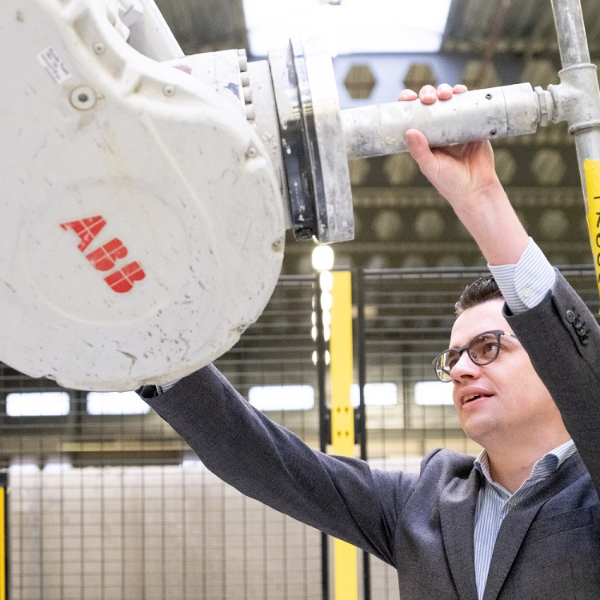Three questions for Marijn Bruurs

Three questions for Marijn Bruurs
1. What role does digitisation play in your work?
The leading role! As an advisor on digital construction and 3D concrete printing, I participate in the digitisation of construction. This is very much needed, because there is an enormous challenge in building production and sustainability that we cannot solve with the building methods and materials of the last century. Demand exceeds supply by far and there are too few people to build the one million homes we need during the coming years. We need to build faster to meet demand, and this can only be done by increasing digitisation on the building site itself and linking it to our digital design.
3D concrete printing can be used on a larger scale to build faster and smarter. This automated construction also fits in with the advancing digitisation of design and management.
There is a huge task in the area of building production and sustainability that we cannot solve with the building methods and materials of the last century.
2. All that concrete is not sustainable at all, is it?
That is the old way of thinking! With 3D printing, 'all that concrete' becomes 'a little bit of concrete' and we are working hard to do that last bit in a more sustainable way. Digitisation is an important key: first, it prevents human errors and therefore the waste of materials. But also, because 3D concrete printing (3DCP) allows you to use exactly as much material as is structurally necessary. So, no solid concrete building elements, but hollow parts that are just as strong.
We also make printing mixtures themselves more sustainable. If cement and steel aren't used, but instead other binding materials and biological fibres, for example, the environmental benefits would be enormous. Or if a local, sustainable cement substitute can be used all over the world. We are actively involved in research into this at the universities of Ghent, Delft and Eindhoven. But don't forget that concrete in principle lasts very long, and that is also sustainable. It is searching for an optimal balance between factors such as limiting the use of raw materials, environmental impact, local availability, and durability.
Developments are rapid and that is necessary
to achieve our goals.

3. Where does 3DCP stand in ten years?
I will give you an example. Last year, because of our extensive knowledge in the field of 3D concrete printing, we UNODC (United Nations Office on Drugs and Crime) asked us to conduct a feasibility study into sustainable and innovative construction methods for affordable housing in Africa. UNODC wanted to know whether, 3DCP would be feasible as a construction method for an autonomous village compared to other potential innovative and/or cost-efficient construction methods.
Our research showed that 3DCP is an interesting technique for developing affordable housing. Both in terms of sustainability and affordability, the importance of developing print materials based on local raw materials and waste materials also emerged.
We are currently mapping these raw materials and waste materials and investigating alternative sustainable concrete mixtures in cooperation with knowledge institutions and local partners. This combination of new ways of building with sustainable materials is where we will make huge strides in the next ten years. The developments are moving fast and that is necessary to achieve our goals.
Want to know more?
Marijn generates impact through innovation such as digitalisation and 3D concrete printing in the construction industry. He was the winner of the 2020 Cobouw Young Talent Award.
